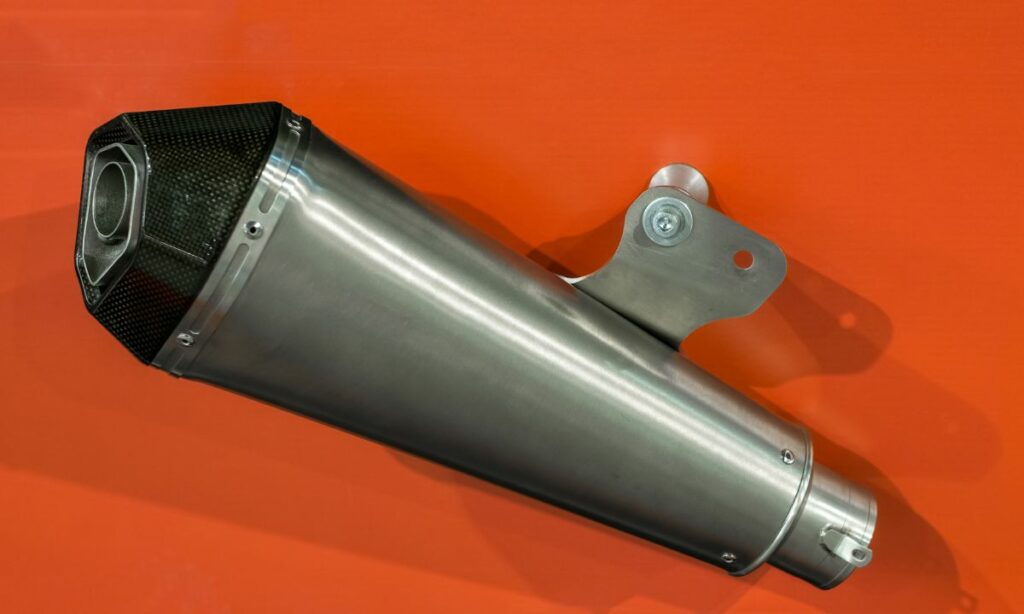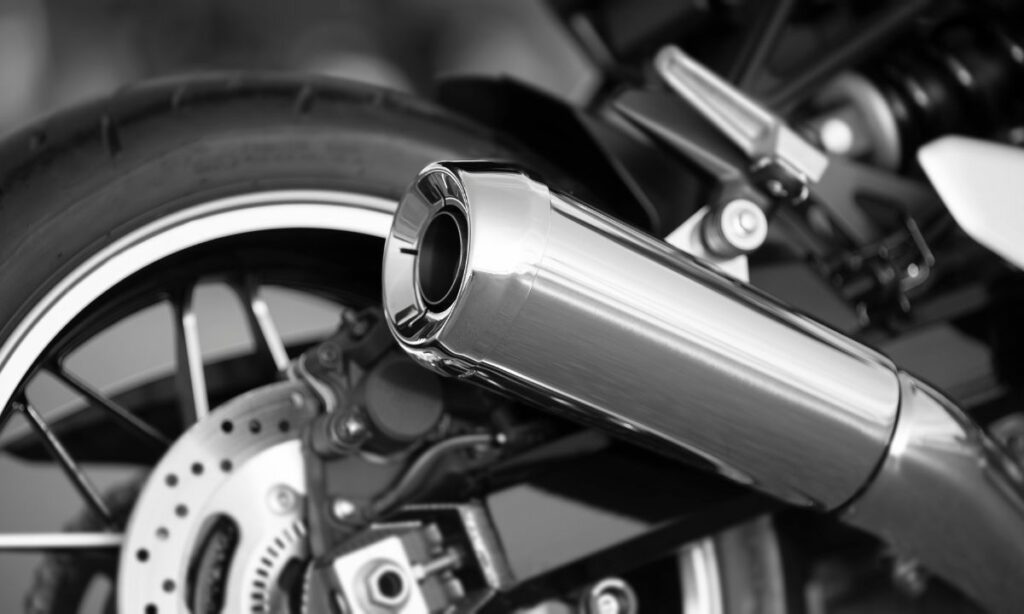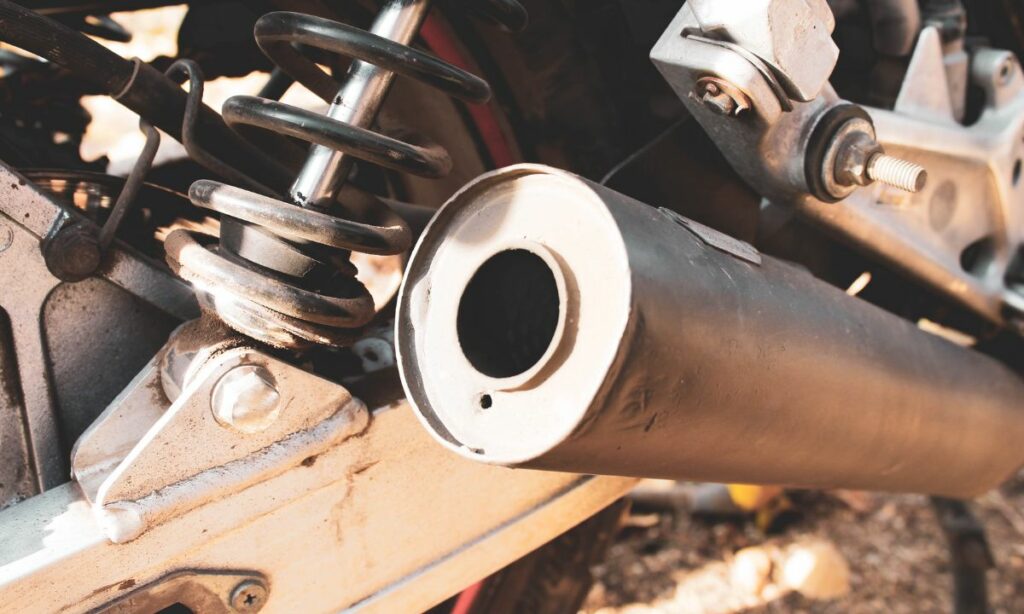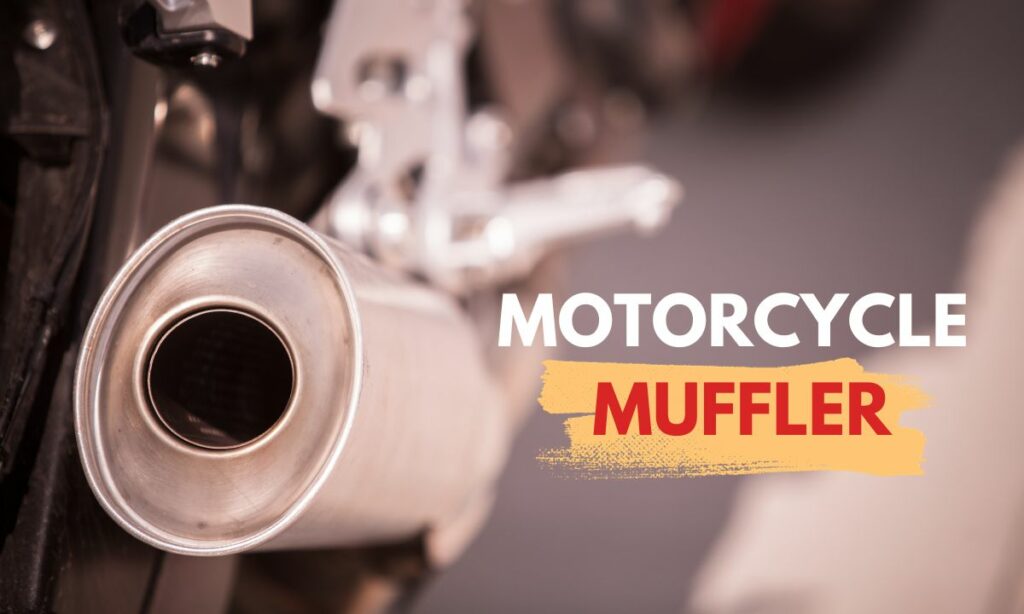Mufflers are one of the most tinkered motorcycle components in the aftermarket.
Riders remove the muffler (don’t ask me why, it looks and sounds cool to them). Add a slip-on to it. Make all sorts of modifications (like straight pipe exhaust for ex) – all sorts of things.
So, what does a muffler do on a motorcycle?
The function of the muffler is to reduce the loud noise and make the motorcycle quieter. It reduces the sound volume and keeps it under 90 dB.
That’s a brief overview. Let’s dive more into this muffler thingy, shall we?
What’s a muffler
A muffler, as the name suggests, is an exhaust component that reduces (muffles) a loud sound. In other words, a muffler lowers the sound decibels.

In motorcycles, a muffler is also called a silencer.
More on that later.
The muffler is the end part of the exhaust system. The last and long frustum-shaped pipe, maybe slightly bulky is the muffler portion of the exhaust.
You see smoke coming from a part of the motorcycle right? That’s the muffler. The exhaust gases exit from the muffler to the outside atmosphere.
Muffler’s function in a motorcycle
The muffler has two main functions:
- to reduce loud noise and make the motorcycle quieter
- to act as the pathway for the exhaust gases
The primary function of the muffler is to reduce the noise and make the motorcycle quieter.
The harmful gas to less harmful gas conversion is done by the catalytic converter installed within the exhaust.
If you ever run your motorcycle without a muffler, the motorcycle will be too loud and noisy. Don’t do it. You are gonna hate the noise. Unless you are one of those high-decibel ear-shattering ‘loud pipes save lives’ harley exhaust noise lovers.
Keep the muffler. It’s important.
The muffler reduces the sound volume drastically.
And how do they do it?
Mufflers have porous fibers installed within them. What these fibers do is, absorb the pressure waves without blocking the exhaust flow. As the flow continues across the fiber material, the noise keeps decreasing.
After absorbing the energy from these exhaust gases, the fibers convert this energy into heat and radiate the heat through the muffler’s outer cover.
I know it’s a lot of info dump. I am gonna stop here. If you want to dig deep into how a muffler works, you can check out this video.
One last thing. A good muffler not only reduces the sound levels but also ensures the output sound from the exhaust is bearable. This includes adjusting the sound frequencies as well.
Muffler vs. Silencer – what’s the difference
There is no difference between a muffler and a silencer. They are the same.
Both the muffler and the silencer refer to the same exhaust component. Be it in a motorcycle or a car.

There are a few who argue a muffler and a silencer are different. And they have some technical differences – the muffler reduces the noise by stopping the flow of sound waves whereas the silencer reduces the noise without stopping the sound waves.
I call BS. That’s not at all true. They are just describing different muffler types.
Both mufflers and silencers – are one and the same and are used interchangeably.
The muffler is US English, and the silencer is UK English.
From what I can tell, that’s the only differentiator. US English and UK English.
The muffler is used in the US and the silencer is used in Europe and parts of Asia.
So, that’s it. Apart from the word usage, there is no difference between a silencer and a muffler.
Types of mufflers
There are 3 main types of mufflers:
- Straight-through muffler (absorption type)
- Chambered muffler (reflection type)
- Turbo muffler (combined type)
How each of these types works and the mechanism is detailed in our explainer here.
What you need to know is:
Motorcycles mostly use straight-through (absorption type) mufflers.
And most cars use turbo (combined type) mufflers. While technically, turbo mufflers have superior noise reduction capabilities, they are too bulky and heavy weight for motorcycles.
Can you ride a motorcycle with no muffler?
Technically, you can ride a motorcycle with no muffler. But, the noise levels will be too high.
Without a muffler, the motorcycle will be too noisy.

Most states and nations have emission and noise standards. So you might run the risk of violating these standards if you ride a motorcycle with no muffler.
What’s the decibel standard then?
While the exact decibel range varies according to the region, the Motor Vehicle (MV) rule book specifies that the maximum sound permissible for motorcycles ranges from 80-91 dB.
If you are riding your motorcycle without a muffler, the noise levels can go as high as 120-130 dB. Depending on the motorcycle make and model of course.
So don’t remove the mufflers. And even if you are – don’t. Okay, even if you are – make sure you are not violating any regulations.
One other thing. a motorcycle without a muffler can also face exhaust overheating and backfire problems.
Most straight-pipe exhaust motorcycles have sound and emission problems, overheating, and backfire issues.
So, it is not advised to ride a motorcycle with no muffler in it.
To sum up, here’s why you should NOT ride without a muffler:
- High noise level (reaching 120-130 dB)
- Risk of violating regulations
- Exhaust overheating and performance problems
Removing mufflers is a bad idea but few riders still do it
I can tell a rider hell-bent on removing mufflers to not do it a thousand times. And yet, he will do it the very next day.
I give up (doing a hands-up gesture while writing this).
But why do these riders remove mufflers?
The main charm is the aesthetics and the sound.
Removing the muffler from a motorcycle gives you two things:
- Improves the aesthetics
- Good for riders who love loud and roaring sounds
Once you remove the muffler and have your exhaust as a straight pipe exhaust, you have to admit, it looks cool on a motorcycle. And therein lies the main advantage of no muffler.
For bike riders who love loud roaring sounds coming out of their motorcycles, riding without a muffler feels good for them.
Apart from these two, there aren’t many advantages of removing the muffler from a motorcycle.
Sure. Few may argue the resulting low weight and improved performance due to muffler removal, but it’s just talking with no bite. There is no clear evidence or research backing such claims.
FAQs
A: The muffler has little to no impact on the engine performance. So, running the motorcycle without a muffler does not hurt the engine. And does not improve the engine performance either.
A: Slip-on exhausts are mostly a harmless way of upgrading motorcycles from aesthetic and functional perspectives. They are neither good nor bad in terms of performance.
A: Exhaust refers to the entire exhaust system that carries exhaust gases from the engine and releases them into the atmosphere. The muffler is one component of the exhaust, which reduces noise along with carrying the exhaust gases.
Before you go…
Here are a few more exhaust related posts for you:
